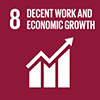Description/achievement of initiative
Launched in October 2009, the 12.5-kilometer (7.8-mile) Phase 1 corridor has proven to be popular with citizens, and ridership remains higher than on the previous bus system.
Source: Institute for Transportation & Development Policy
Since opening, the system has expanded to 31 km (19.3 mi) and ridership has more than doubled to nearly 60,000 passengers per day. Over 40 percent of the passengers switched from motorized two- and three- wheelers, while the remainder switched from the existing city bus service. ITDP, in partnership with CEPT University, assisted the Ahmedabad Municipal Corporation with physical designs, operational planning, and contracting.
Janmarg's system includes pre-board ticketing, high-quality median-aligned stations with level boarding, and real time information at stations. Janmarg's buses were specifically designed to operate both on and off the corridor with doors on both sides. This allows curb-side passenger pick-up when off the BRT corridor and median-side for when on the corridor. Safe and secure cycling facilities run parallel to the line on parts of the network.
Janmarg is projected to reduce 288,000 metric tons of CO2 per year, in part because the project, through providing better and higher quality service, will prevent passengers from switching from buses to private cars and motorcycles in the future as incomes rise.
Implementation methodologies
Arrangements for Capacity-Building and Technology Transfer
Coordination mechanisms/governance structure
Partner(s)

